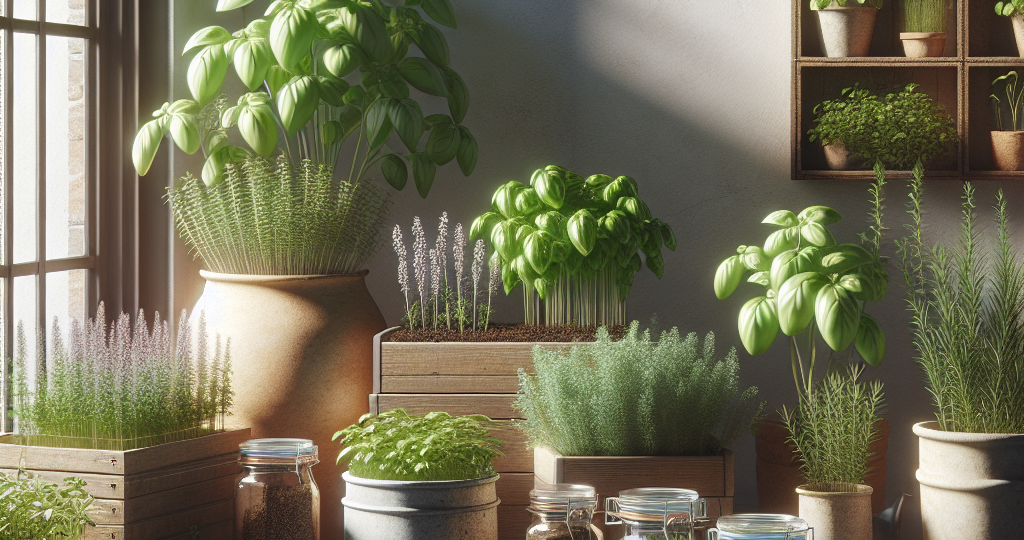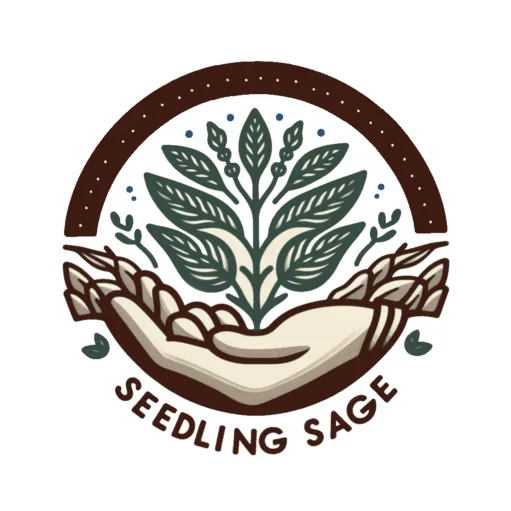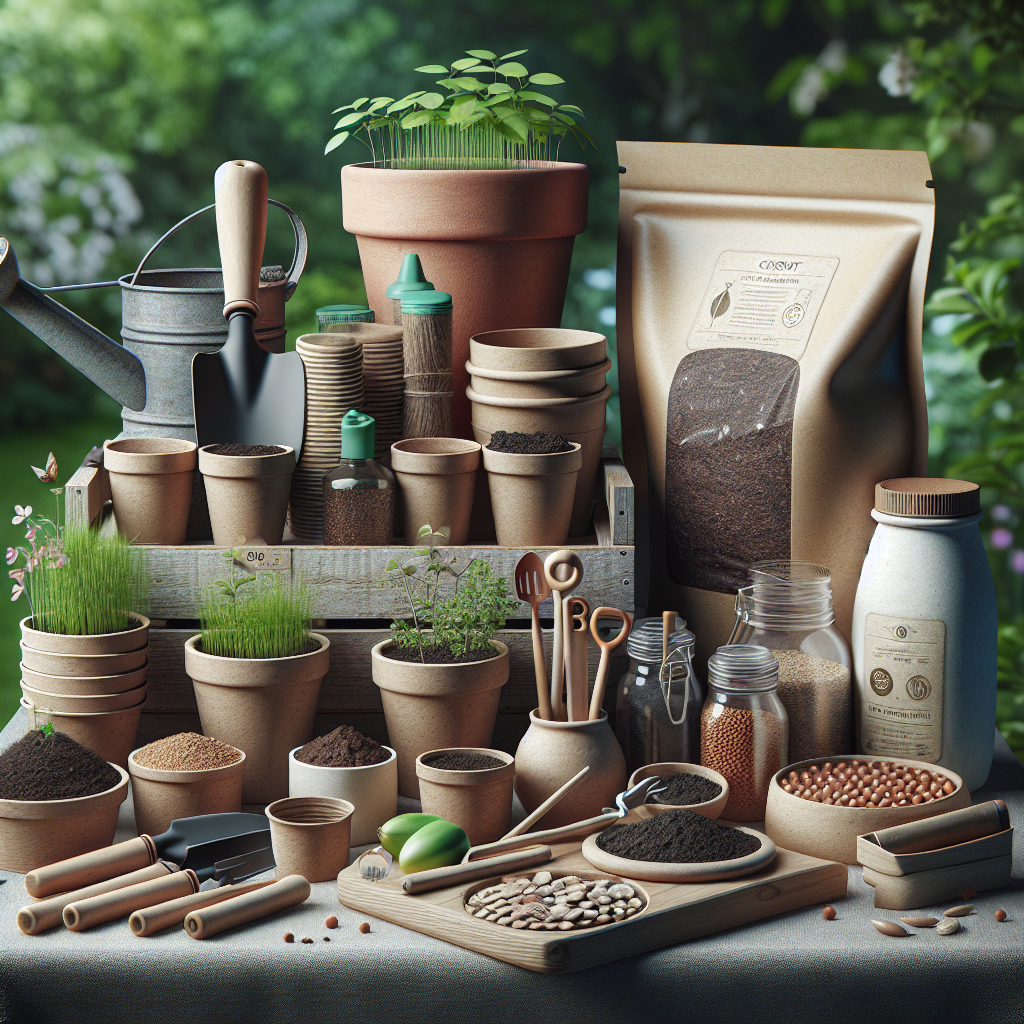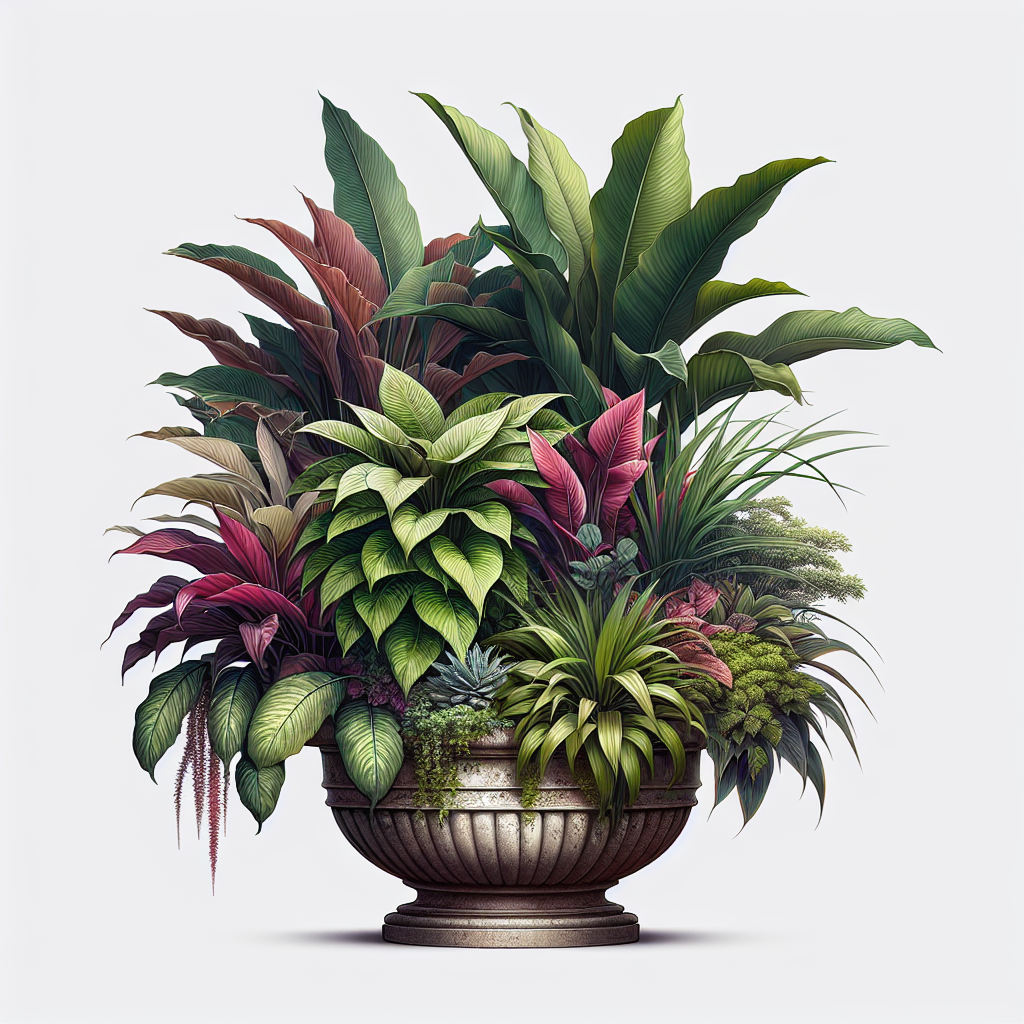Container Herb Gardening Made Easy: Fresh Flavors at Your Fingertips
October 30, 2024 | by Emma Sage

CONTAINER HERB GARDENING FOR BEGINNERS
12 min read
Join me on my journey with container herb gardening for beginners and grow fresh flavors right at home!
Getting Started with Container Herb Gardening
I’ve figured that growing herbs in pots is a nifty way to keep my kitchen buzzing with fresh tastes, even in my little urban nook. It’s really about picking the right herbs and pairing them wisely.
Herb Selection for Containers
When I’m picking herbs for containers, I think about what I love to cook. It helps when I pow-wow them into themes based on different cuisines. Take for instance a Mediterranean Garden with basil, thyme, and oregano, or a Mexican Garden with cilantro and jalapeño. Here’s how I slice and dice it:
| Garden Theme | Suggested Herbs |
|---|---|
| Mediterranean | Basil, Rosemary, Thyme |
| Mexican | Cilantro, Jalapeño, Oregano |
| Indian | Cilantro, Mint, Curry Leaves |
| Tea Garden | Chamomile, Mint, Lemon Balm |
| Salad Garden | Lettuce, Basil, Chives, Parsley |
| Cocktail Garden | Mint, Lemon Balm, Rosemary |
Picking herbs that tickle my taste buds makes this little green adventure fun and super rewarding.
Container Grouping by Climate and Sunlight
Clumping my herbs based on their love for sun or shade keeps them happy. Some enjoy soaking up the sun, like basil and rosemary, while others like mint, kind of like chillin’ in the shade (thanks Farm to Jar). Here’s a cheat sheet I use:
| Herb Type | Sunlight Requirement | Example Herbs |
|---|---|---|
| Full Sun | 6-8 hours daily | Basil, Rosemary |
| Partial Shade | 4-6 hours daily | Mint, Chives |
Keeping an eye on each herb’s likes and dislikes, I can nurse a thriving mini-garden. The best thing about container herb gardening? It’s like clay you mold to fit your space, letting me grow the flavors I love no matter where I call home. For some cool tips on jumping into this fun project, peek at our beginner’s guide to container gardening for beginners and see how running a container vegetable gardening for beginners operation is a piece of cake.
Making Herbs Thrive in Pots
When I dipped my toes into pot herb gardening, I discovered a few tricks that turned my brown thumb green. Juggling moisture needs and picking just the right herb combos were like unlocking the secret garden code. Follow along and maybe you’ll grow your own herb-tastic paradise.
Watering Know-How
Figuring out how much water my herbs need meant lots of trial and error. Each herb’s got its own drink schedule, and teaming the wrong ones can turn your pot into a drought-nado or swamp. Take, for instance, herbs from the sunny lands like basil and rosemary – they’re sunbathers and need regular sipping. Then there’s mint, basking in part shade, where it can be a tad thirstier (Farm to Jar).
Here’s how I roll when it comes to watering my herbs:
| Watering Style | Herb Pals |
|---|---|
| Regular Gulps | Basil, Rosemary |
| Loves Dampness | Mint, Cilantro |
By pairing plants with similar drinking habits, my watering routine isn’t a hot mess anymore. It’s like sipping your favorite drink—perfect timing, every time.
Why Grow Herbs in Pots?
Living in a city means not much room to grow things. But with pots, the world of herbs opened wide for me. Here’s why:
- Tiny Space Wonder: You can stick these babies on a balcony, fire escape, or wherever you find a sunbeam.
- Pick-Up and Go: Moving them around to snag sun or dodge weather is a breeze.
- Soil Bossing: You can whip up the perfect soil cocktail – topsoil, compost, and a sprinkle of sand do wonders for Mediterranean sorts (Gardenary).
- Bug Out: You get to play insect overlord and keep the critters at bay more easily.
These perks make herb potting a slam dunk for city folk like myself.
Picking Herb Partners
Spotting the right herb soulmates can turbocharge your garden game. I like to think about my future culinary masterpieces and how these herbs will fit in like family. Consider this:
- Cooking Crew: I often huddle basil, parsley, and oregano together for a little culinary harmony.
- Smell Squad: Team mint with thyme and sage, and your nose will thank you with sweet scents and your kitchen with fresh flavor.
With a bit of planning, turning your pots into a leafy dream team is entirely possible (Farm to Jar). By letting watering needs, crazy good container perks, and smart herb matchmaking guide your way, your pot-planters will be brimming with beauty and taste worth every moment.
Essential Tips for Container Herb Gardening
When I first dipped my toes into container herb gardening for beginners, it was a mixed bag of excitement and lessons learned the hard way. Here’s a scoop on what worked wonders for my green friends.
Container Depth and Plant Variety
Finding the right container depth was like figuring out my herbs’ comfy bed – crucial for their well-being! Different herbs have their own depth hang-ups. Here’s a handy cheat sheet:
| Herb Variety | Best Container Depth |
|---|---|
| Basil | 8 inches |
| Rosemary | 8-10 inches |
| Mint | 10 inches |
| Cilantro | 8 inches |
| Oregano | 8-10 inches |
For heavyweight veggies like beets, broccoli, and potatoes, think of deep dives into containers of 10 inches or more so those roots can party (EarthBox).

Sunlight Requirements and Managing Summer Heat
Herbs are sun-worshippers, needing at least six hours of those golden rays to strut their stuff. Mediterranean types like basil and rosemary bask in full sun, while mint prefers a bit of shade from the spotlight (Farm to Jar).
When summer goes all scorched earth, I shuffle my containers into a cooler corner now and then, to save them from turning into dried herbs. Keeping an eye on sunlight and shifting shade is my secret sauce for juicy plants.
Proper Watering Techniques
Watering is the heart of my green thumb skills—or lack thereof. I’ve flubbed with wet boots and desert plants. The art is in soaking the soil without drowning it, popping some mulch or gravel on top to hold in that sweet H2O, and of course, a few drain holes to let any extra make its exit (EarthBox).
By poking the top inch of the soil, I can tell when my leafy pals need a drink. If it’s dry, it’s a water time check. Keeping an eye on the weather keeps my schedule in tune with my herbs’ thirst.
Following these golden rules, my container gardens have thrived in the concrete jungle, gifting me fresh herbs to spice up my meals. If you’re hungry for more gardening know-how, my article on easy container gardening for beginners has extra nuggets of wisdom.
Soil Quality and Fertilization
Importance of Quality Soil Mix
So, when I first dived into the world of container herb gardening for beginners —with my sleeves rolled up and a mismatched pair of gardening gloves—I quickly stumbled upon a golden rule: good soil is like a strong Wi-Fi connection, essential. If you’re serious about giving those herbs the best shot at survival in their little pots, you’ve got to think like a plant: “Drain well. Hold oodles of nutrients. Breathe, darn it, breathe!” That’s why I ended up using soil specially concocted for containers, and trust me, it was life-changing.
Take the 103 blend, for instance. It’s like the soil version of a perfectly balanced diet. Let’s break it down:
| Ingredient | Purpose |
|---|---|
| Topsoil | The solid foundation |
| Compost | Nutrient buffet |
| Sand | Drainage superstar |
| Earthworm Castings | Nature’s multivitamin |
This mix doesn’t just drain like a dream, it also creates the sandy vibes that herbs from sun-soaked Mediterranean lands are all about (Gardenary).
Container Fertilization Guidelines
Ah, fertilization—think of it as feeding your herbs their superfoods! From what I’ve observed—and a few, let’s call them “learning opportunities”—it’s good to give those greens a little nutrient love every two to four weeks. Some might be hungrier than others, depending on how fast they grow.
Let’s look at the main players in plant nutrition:
| Nutrient | Role |
|---|---|
| Nitrogen | Leafy growth fanatic |
| Phosphorous | Root and flower whisperer |
| Potassium | The plant’s personal bodyguard |
My trick is to match the fertilizer to what each herb needs. A quick peek at the package ensures I’m making a sound investment in plant prosperity (EarthBox).
With rich soil and a little fertilizer magic, my container garden turned out to be a real show-stopper! For more practical tips, dive into my guides on easy container gardening for beginners and the beginner’s guide to container gardening.
Growing Specific Herbs in Containers
Kicking off my fun little adventure in container herb gardening has been a blast! It’s a fantastic way to get my hands dirty with gardening, particularly when dealing with small urban spaces. Let me share some beginner-friendly herbs and my favorite tips to keep them thriving.
Recommended Herbs for Beginners
Certain herbs are a breeze to grow in containers, making them perfect for folks just starting out. Here’s a quick table of popular herbs and how they might spice up your meals:
| Herb | Common Uses |
|---|---|
| Basil | Italian dishes, pesto |
| Mint | Teas, cocktails, desserts |
| Cilantro | Mexican and Asian cuisines |
| Chives | Salads, soups, garnishing |
| Parsley | Soups, salads, decorations |
When I’m picking herbs, I think about what’s cooking. Feeling like pasta night? Basil’s my go-to. According to Farm to Jar, grouping herbs by theme—like Mediterranean or Mexican—makes things easier and more fun.
Tips for Growing Popular Herbs
I’ve gathered some handy tips to transform my herbs into healthy, happy plants:
- Choose the Right Container: Look for sturdily built pots at least 6-8 inches deep with drain holes, stop those roots from getting soggy.
- Use Quality Soil: A good mix is worth its weight in pesto. I swear by the 103 blend—mixing it up with topsoil, compost, sand, and earthworm castings. It’s fab for Mediterranean herbs if you believe Gardenary.
- Water Wisely: Keep your herbs cheerful with regular watering—container herbs dry out faster. Don’t drown them though; the top inch should be moist, not swimming.
- Placement and Sunlight: Park those pots where they can soak up at least 6-8 hours of sunlight daily. Too much sun? Throw some shade their way.
- Fertilization: A balanced, organic fertilizer is like a superhero meal for your herbs—just check the label for when and how much.
I’ve found starting out with container gardening for beginners is not only a rewarding hobby but also slots seamlessly into city life. I love seeing my herbs grow and can’t wait to add a sprig of ’em to my next dish. If you’re curious, join me in easy container gardening for beginners for more nifty advice!
Maintenance and Harvesting
Tending to my container herb garden has been a real treat. Giving my herbs a bit of love and attention keeps them happy and makes sure they stick around. Here’s the scoop on what’s worked for me.
Pruning and Deadheading Herbs
Snip, snip! Pruning and deadheading are my go-to moves. Every time I give my herbs a little trim, like cutting the tops off basil or mint, they seem to get all bushy on me. It’s like a free boost for my herb stash—double the leaves for my culinary adventures.
Oh, and deadheading is like giving my plants a fresh start. Popping off those faded flowers on my lavender or sage lets the plant focus on sprouting more leaves instead of seeds. Keeps things looking lively.
| Herb Type | Pruning Frequency | Deadheading Advice |
|---|---|---|
| Basil | Every 2-3 weeks | Snip flowers to amp up the leaf game. |
| Mint | Every 4 weeks | Trim post-flower for more foliage. |
| Rosemary | Every 4-6 weeks | Light cuts to keep the shape sleek. |
| Lavender | Every 6 weeks | Prune after blooms for new growth. |
Tips for Encouraging Herb Growth
Growing healthy herbs involves a little strategizing. Knowing who likes a regular drink and who doesn’t is key. Basil and mint are like BFFs—they love the water, so I keep them in the same pot. On the other hand, thyme is the independent type and does better with a drier spot all to itself.
Good watering goes a long way. I learned to really soak the soil during watering. Mulch and gravel are like insurance policies, locking in moisture and slowing down evaporation. And I always double-check that my pots have enough drainage, ’cause soggy roots are bad news (EarthBox).
Sunshine is another must. I shoot for giving my herbs around six hours of sun a day. My rosemary and basil are sun worshippers, but others can deal with a bit of shade. Finding that sweet spot of light makes a noticeable difference in how they grow.
By keeping up with these tips, I get to savor fresh herbs straight from my own container vegetable garden. Whether it’s tossing them into a dish or just soaking up their scents, having this little green oasis is a highlight of city life.
Happy Gardening,
Emma Sage
RELATED POSTS
View all



